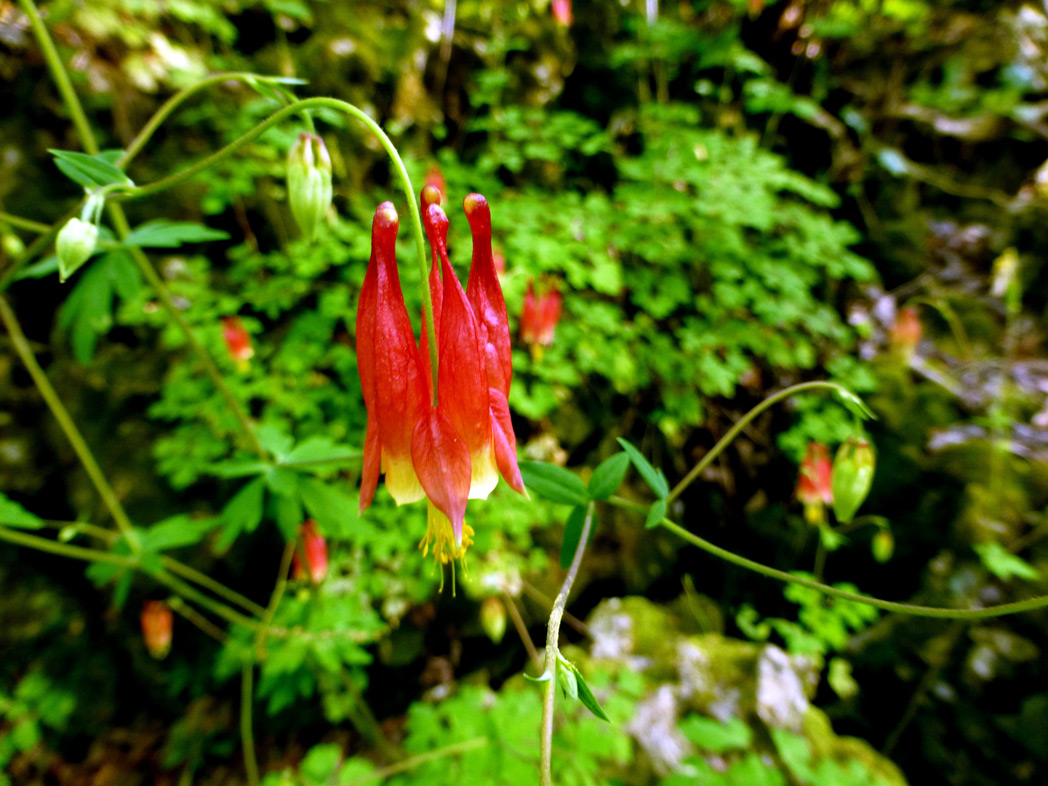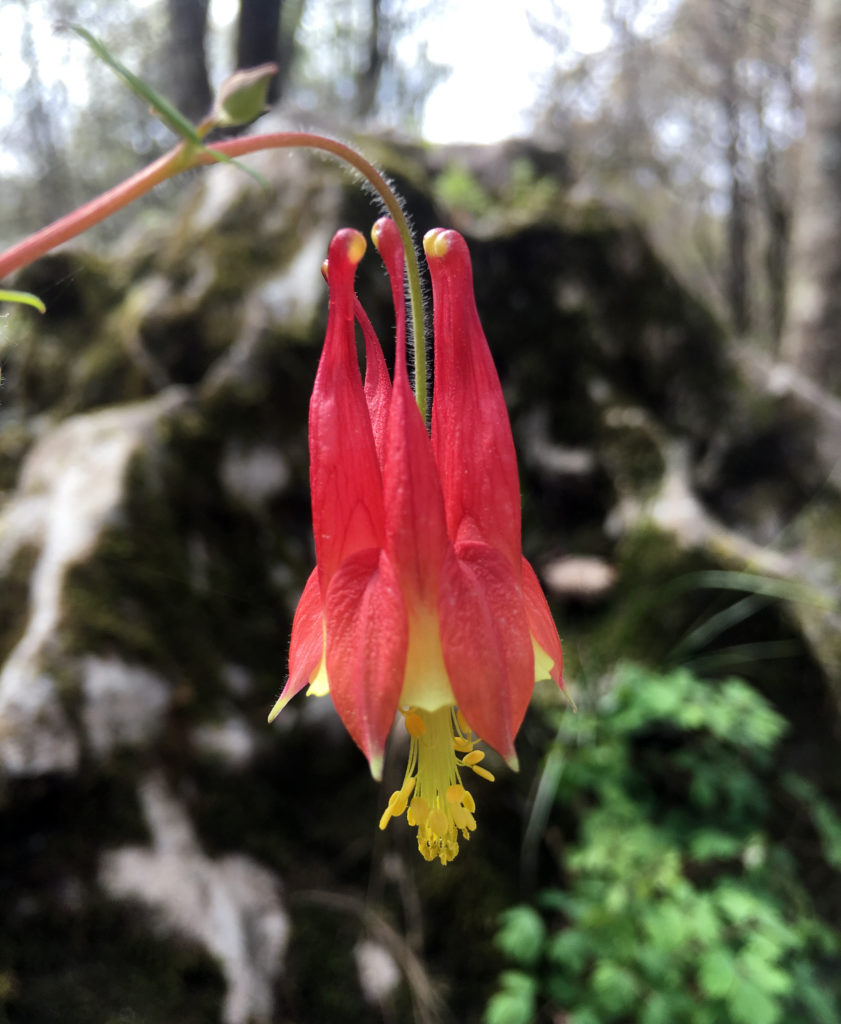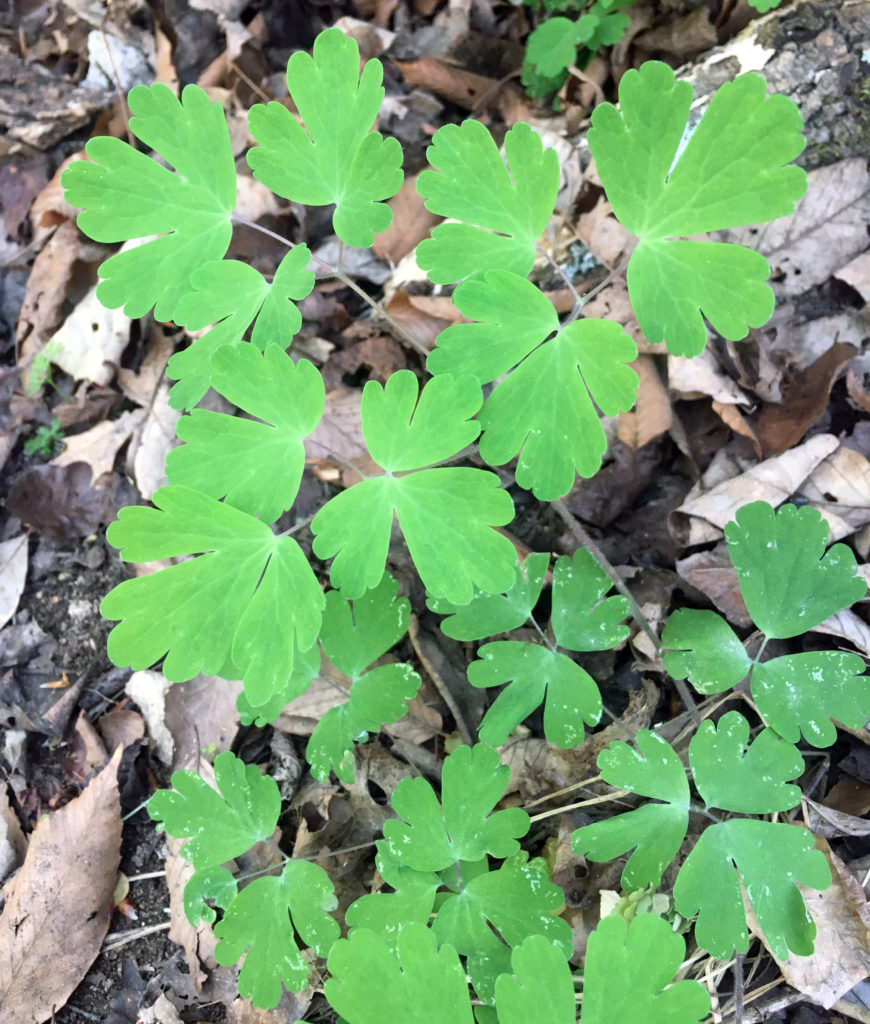Wild columbine
Pictured above: Wild columbine (Aquilegia canandensis) by Eleanor Dietrich. Click on terms for botanical definitions. View post as a PDF.
Wild columbine (Aquilegia canandensis) is one of Florida’s most striking and unique native wildflowers. It is occurs naturally in only three counties in the Panhandle, where it is a state-listed endangered species. It grows in limestone outcroppings and calcareous hammocks and is common in Florida Caverns State Park. Wild columbine blooms in spring. Its nectar is a favorite of hummingbirds and long-tongued bees, butterflies and moths. Small birds enjoy its seeds.
Wild columbine is a perennial herbaceous wildflower. Its blooms are terminal, tubular and nodding. Each flower consists of five red petals and five yellow sepals. Each petal has a hollow spur or horn-like structure where large amounts of nectar are stored. Flower stalks are thin, wiry and arching. The plant’s compound, alternately arranged leaves are feathery and fern-like, each with three lobed leaflets. Fruits are capsules that bear many tiny black seeds.
Native Americans used the plant to treat headaches, fever, sore throats, and stomach, kidney, urinary and heart problems. The crushed seeds were rubbed on heads to control lice and on hands as a love charm. The genus Aquilegia comes from the Latin aquila or “eagle” and refers to the spurred petals that some say resemble an eagle’s talons.
Family: Ranunculaceae (Buttercup family)
Native range: Jackson, Liberty and Washington counties
To see where natural populations of wild columbine have been vouchered, visit florida.plantatlas.usf.edu.
Hardiness: Zones 8A–9B*
Soil: Moist to moderately dry, calcareous soils
Exposure: Partial to full shade
Growth habit: 2–3’ tall
Propagation: Seed
Garden tips: *Although Wild columbine’s natural range is limited to just three counties in zone 8, many sources, including Walter Taylor’s Florida Wildflowers: A Comprehensive Guide (University Press of Florida, 2013) and Craig Huegel’s blog, “Hawthorn Hill Wildflowers,” say Wild columbine can be used in the landscape as far south as Central Florida (specifically Pinellas and Orange counties), provided it is given the appropriate conditions. Huegel suggests that the plant needs “sun in very early spring, …dappled light the rest of the year… [and] protection from the heat of summer.” For more of his tips on growing Wild columbine, click here.



